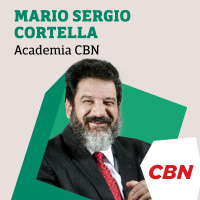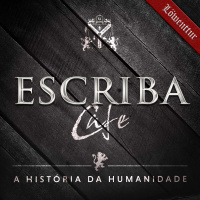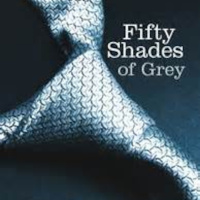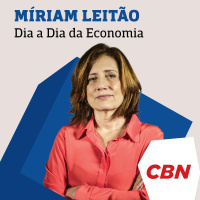Sinopsis
The Royal Academy of Arts is a place where art is made, exhibited and debated.
Episodios
-
Cornelia Parker talks prints, process and inspirations
17/07/2017 Duración: 56minTo fully enjoy this podcast, we recommend listening while viewing the images Cornelia Parker presented alongside her talk: roy.ac/2uuXhFB Cornelia Parker, one of today’s most renowned artists, speaks candidly about what inspires her and her printmaking practice, in conversation with Jan Dalley, Arts Editor of The Financial Times. Cornelia Parker is well known for her large-scale, often site-specific, installations. Often there is an apocalyptic tone to her work, but Parker also demonstrates a concern with the more insidious effects of global warming and consumerism. Parker works in a variety of media and has collaborated with institutions such as HM Customs & Excise, Royal Armouries, Madame Tussauds and Victoria & Albert Museum. She was nominated for the Turner Prize in 1997 and appointed an Officer of the Order of the British Empire (OBE) in 2010.
-
Designing urban identities: West London
09/06/2017 Duración: 01h31minWhile much attention has been placed on the drastic changes in East London, there are equally major projects in West London that are reconfiguring the nature of the built environment. Old Oak Common, Earls Court and Acton are just some of the next housebuilding hotspots in London, and with the opening of the East-West Crossrail line and the expansion plans for Heathrow Airport, these projects will drastically transform the economy, cityscape and thus identity of West London. The character of the urban fabric of London varies across the city, and has been shaped over time by varying economic, political and social factors. As new developments emerge they need to both respond to existing conditions and help formulate a future vision and identity for the locale within London. How are these new developments responding to existing and future identities? What is the role of local communities in defining these new areas?
-
Designing urban identities: East London
09/06/2017 Duración: 01h27minFrom Stratford to Royal Docks, the identity of East London is being drastically reshaped, turning this former industrial area into one of the new cultural and financial districts of the city. We look at key projects in development that will have a major impact on East London with architects, planners and social and political commentators. The architectural heritage of London varies between sub-regions, boroughs and local communities, creating a city with many different characters. Will this be the case in the future, and how are new developments responding to existing identities and shaping new ones? And indeed, how important are these identities to the city’s future strength and prosperity?
-
International Architects Series: Aires Mateus
08/06/2017 Duración: 57minPortuguese architects Aires Mateus talk about their calm approach to architecture, exploring light and form through their recent projects. Over the last thirty years, Aires Mateus have gained international recognition for their delicate and respectful contemporary reinterpretation of Portuguese architectural tradition. Their portfolio started with the small-scale residential projects for which they became best-known and has now expanded internationally, with commissions for a wide range of public and private clients.
-
The Soviet state and the avant-garde
24/05/2017 Duración: 01h04minProfessor Christina Lodder and writer and curator Konstantin Akinsha explore the complex relationship between the Soviet leadership and the avant-garde art movement in Russia between 1917-32, in a discussion chaired by art historian Theodora Clarke. Avant-garde artists were some of the first to embrace the Bolshevik cause, with a common interest in “a new art for a new society”. As Anatoly Lunacharsky, People’s Commissar of Enlightenment, declared in 1918 to composer Sergey Prokofiev, “You are revolutionary in music as we are revolutionary in life”. Members of the avant-garde took key posts in the new regime and benefited from state resources. However within a few years, the state began to withdraw its support, feeling that abstract art could not advance the communist cause if the masses could not understand it. A more persuasive and recognisable art best suited the party’s requirements. By 1932, the politicised figurative art of Socialist Realism became the dominant style and independent artistic movements
-
Maggi Hambling in conversation with Tim Marlow
24/05/2017 Duración: 56minPainter and sculptor Maggi Hambling discusses her work with the RA’s Artistic Director, Tim Marlow. One of Britain’s foremost contemporary artists, Hambling is perhaps best known for her compelling portraits, paintings of the sea and her celebrated and controversial public sculpture, including 'A Conversation with Oscar Wilde' (1998) and 'Scallop' (2003). Her work is represented in major British Collections including the British Museum, the National Gallery, National Portrait Gallery, V&A and Tate. Hambling has never been afraid of addressing big themes and delivers the simultaneous presence of life and death in her work. Following her recent retrospective at the British Museum, her exhibition, Edge, at Marlborough Fine Art (1 March–13 April), presented a new series where polar icecaps melt, Aleppo and its inhabitants fall, ghosts hover and Hamlet questions.
-
Peter Wormersley: forgotten master of architecture
24/05/2017 Duración: 01h21minScottish architect Neil Gillespie and historian Simon Green discuss the intriguing yet often overlooked contribution of Peter Womersley to Scottish modern architecture. Trained at the Architectural Association in London, most of Womersley's first commissions were private homes for clients including textile designer Bernat Klein. These experimental and poetic houses show their debt to Frank Lloyd Wright, while his larger public commissions followed a more brutalist tradition with in-situ concrete and strong geometric forms. These include the Gala Fairydean Stadium with its distinctive concrete origami structure and soaring cantilevers, designed in collaboration with Ove Arup, and the highly sculptural Boiler House, for the Melrose District Asylum. Although most of his works are located in the Scottish Borders, with others across the UK, he was a frequent traveller and lived and worked briefly in both Hong Kong and Kuwait.
-
Black art and activism
18/05/2017 Duración: 01h21minArtists Sonia Boyce RA, Dr Kimathi Donkor and Jacob V Joyce join arts practitioner and academic Dr Michael McMillan to discuss whether black artists today are expected to challenge global and national issues of race and representation. Can art and spaces for art contribute to an ongoing dialogue between visual culture and activism in the context of racial prejudice? How do artists see their role? Is art an effective vehicle for protest, grief or hope?
-
The art of the 1930s American dream
19/04/2017 Duración: 59minProfessor Sarah Churchwell examines the political, cultural and aesthetic contexts to work by Grant Wood, Edward Hopper, Reginald Marsh and Georgia O’Keeffe, alongside popular films of the Great Depression era. During the Great Depression of the 1930s, the United States confronted for the first time the possibility that the American experiment might have failed. It was during this period that the phrase “the American dream” was first coined and became a catchphrase for debating the promises and failures of the American project. American artists responded to questions about a national or collective sense of identity with works that raised questions about history, politics, social realism and allegory, about the nation’s mythological past, its anxious present and its hopes for the future. Sarah Churchwell is professorial fellow in American literature and chair of public understanding of the humanities at the School of Advanced Study, University of London.
-
Art under state control from the Russian Revolution to today
19/04/2017 Duración: 01h15minThroughout history the arts have been subject to varying degrees of state control in different countries across the world. It is evident that art can survive even under a severe curtailment of artistic freedom, but can creativity flourish? State support is significant to the development of the arts, but even in countries where freedom of expression is encouraged, it can also unduly influence its direction through funding, policies and control over education. Should art be connected to the state? To what extent do governments preside over their countries' cultural sectors today? Speakers: Elena Sudakova – Founder and Director of GRAD: Gallery for Russian Arts and Design Edmund Clark – award-winning artist who uses photography, found imagery and text to explore links between representation and politics. Kirsty Lang (chair) – journalist and broadcaster, presenter of Radio 4’s ‘Front Row’.
-
The potential and pitfalls of communal living today
19/04/2017 Duración: 01h25minInspired by idealist proposals for a new way of life after the Russian Revolution, the panel interrogate the feasibility of co-living that is accessible to all, and suggest what other aspects of our everyday life could benefit from being more communal. Is there room for shared spaces in an individualistic society? Can a more communal attitude help tackle the issues of contemporary society, or does it make them more acute? Does shared responsibility lead to no responsibility? Speakers: Helen Jarvis – Reader in Social Geography at Newcastle University, whose research interests include the “social architectures” of shared space and self-governance in collaborative living arrangements. Anna Puigjaner – Co-founder of Barcelona-based MAIO studio, winner of the 2016 Wheelwright Prize for her proposal to study collective housing models across the world and their approaches to organising domestic spaces. Andy Willimott – Lecturer in Modern Russian/Soviet History at the University of Reading, author of 'Living th
-
American Gothic: Grant Wood's personal and stylistic influences
19/04/2017 Duración: 01h10minArt historian R. Tripp Evans delves deep into the significance and origins of Grant Wood’s iconic American Gothic – a painting at once one of the most recognisable and enigmatic images in American art. When American Gothic debuted at the Art Institute of Chicago in the autumn of 1930, critics from New York to Berlin hailed the work as a “national portrait”. Some championed the image as a tribute to a lost agrarian age, while others perceived in it a wicked satire of American provincialism. Decidedly more gothic than it is American, the painting conjures the ghosts and family secrets of Wood’s own past, casting each of its haunting figures in multiple roles. Art historian R. Tripp Evans is the award-winning author of 'Grant Wood: A Life' (2010) and professor of art history at Wheaton College, Massachusetts.
-
Back to the future: the remnants of Modernism's postwar ideals
19/04/2017 Duración: 01h20minLooking to the future was an essential part of Modernism; its postwar advocates believed that they were building a new and better world. In a second age of austerity, when we face housing shortages once more, do the utopian ideals of postwar Modernism offer any solution? Speakers: Peter Barber – architect, principal, Peter Barber Architects, and lecturer, University of Westminster Farshid Moussavi RA – architect, founder, Farshid Moussavi Architecture (FMA), and Professor in Practice of Architecture, Harvard Graduate School of Design Douglas Murphy – architect, architecture correspondent, Icon magazine, and author of 'Last Futures: Nature, Technology and the End of Architecture' Adrian Forty (chair) – Emeritus Professor of the History of Architecture, The Bartlett School of Architecture, UCL
-
Introduction to ‘Revolution: Russian Art 1917–1932’
05/04/2017 Duración: 55minExhibition co-curator Professor John Milner introduces ‘Revolution: Russian Art 1917-1932’ and investigates how artists from Kazimir Malevich to Alexander Deineka made Russian art revolutionary in the first 15 years after the Bolshevik revolution of 1917. The revolution triggered radical innovations in Russian art. Encouraged to work collectively to promote the revolution, artists began to make a face for the Bolshevik regime, replacing signs of the Imperial command with an art for the people. Artists including Kandinsky, Malevich, Tatlin, Rodchenko and Popova turned the storm of the Russian Revolution into a radical experiment in art and society. In 1932, the work of these artists was celebrated and exhibited in 'Artists of the Russian Federation over Fifteen Years', a diverse survey held in Leningrad and curated by the critic Nikolai Punin. Yet later in the same year, all independent art groups were dissolved, and Socialist Realism became the dominant force in the Russian art world.
-
Art in the service of the Russian Revolution
28/03/2017 Duración: 55minDr Natalia Murray, co-curator of the RA's ‘Revolution: Russian Art 1917-32’, explores how visual art was used to propagate revolutionary and communist ideas in the aftermath of the Russian Revolution. The Bolshevik Revolution of 1917 aimed to destroy the old bourgeois society and build a new, homogenous socialist state. Overnight becoming the ruling party in Russia, the Bolsheviks aimed to use the power of mass propaganda to establish their founding mythology and disseminate their ideas to an overwhelmingly rural and illiterate population. The leader of the new Bolshevik state, Vladimir Lenin, proclaimed that culture should support political needs, which effectively meant that all culture was now viewed as propaganda. The Bolshevik regime also believed that culture should not be for a privileged minority, but should be of mass appeal, promoting a so-called “proletarian” art.
-
Concrete fetishes: the ghost of Brutalism's radical social agenda
28/03/2017 Duración: 01h03minToday, although its monuments are vanishing, Brutalism enjoys a ghostly afterlife. Following decades of official and public contempt, its rehabilitation began when concrete tower blocks featured prominently in 1990s music videos by Britpop groups such as Blur and Suede. This revival continued in mid-2000s blogs by writers such as Owen Hatherley, and today it flourishes in Instagram accounts, soft furnishings, art galleries and coffee-table books. Meanwhile the buildings themselves have become hot property, changing hands for sums that are far beyond the means of their intended inhabitants. What are the causes of this strange resurgence in Brutalism’s popularity? Is it simply nostalgia, or does it represent a form of opposition to the politics that caused the demolition of so many of its exemplars? Why does Brutalism seem so at home in new media that are the very opposite of its material ideals? Are its fans interested in the ethic or just the aesthetic, to appropriate the terms that Reyner Banham used to in
-
Film and the Soviet avant garde
27/03/2017 Duración: 01h01minIan Christie discusses the place of film as an art form after the revolution in Russia and the relationship between Soviet filmmakers and other artists of the time. The status of film as an art form rose considerably after the revolution, with Lenin claiming that “of all the arts, for us the cinema is the most important”. However, cinema’s success created bitter divisions among artists seeking support from the generally conservative regime, and encouraged disdain among some of the leading avant-garde artists of the time. Christie is Anniversary Professor of Film and Media History at Birkbeck, University of London and advisor on film in the RA's exhibition 'Revolution: Russia 1917-1932'.
-
Exploring the relationship between gender and materials in art
27/03/2017 Duración: 53minA panel discussion exploring the relationship between art, gender and materials and how an artist’s process, biography and scale of work can shape our reading of gendered art practice. The panel is comprised of artists Ann Christopher RA, Coco Crampton and Mark Dunhill (of Dunhill and O’Brien, and chaired by Helena Reckitt, Senior Lecturer in Curating at Goldsmiths University
-
International Architects Series: Izaskun Chinchilla
27/03/2017 Duración: 01h08minIzaskun Chinchilla leads a discussion that asks how architectural design practices can be used to empower women. Would an architecture that is more in tune with the needs of women be more beneficial for everyone? How can planning policy adapt to the fact that men and women use public space in different ways? Would embracing the aesthetics associated with women allow architecture engage a wider public? Chinchilla is characteristic of a new generation of architects focusing on the connections between social and scientific thinking. While her practice and research are are consistently informed by a dedicated attention to “how a fully developed female mind-set can create new business, cultural, social and environmental opportunities".
-
Architecture and urbanism in Moscow today
27/03/2017 Duración: 55minArchitect, curator and teacher Daria Paramonova discusses the aesthetics, economics and ethics of Moscow's cityscape today. As Moscow faces a remarkable stage of urban redevelopment, it is forced to engage with spaces that have been forgotten since the fall of the Soviet Union 25 years ago. With an unprecedented emphasis on pedestrians, safety, ecology and technology, the city is rebuilding its buildings, streets and public spaces, transforming into an urban environment with new parameters of comfort.














